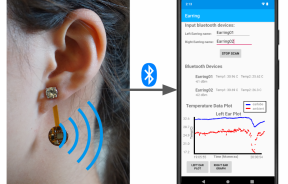Struggling To Burn Fat? Your Conception Month Could Be A Reason

Ever wondered why some people burn calories effortlessly while others battle stubborn fat no matter how hard they try? The answer might be not just in your DNA but in the calendar. And no, it has nothing to do with horoscopes.
Researchers now say the month you were conceived could play a surprising role in shaping your body's fat-burning potential, thanks to brown adipose tissue (BAT) or brown fat, a special type of fat that helps burn calories.
In a recent study conducted in Japan, researchers discovered that babies conceived in colder months tend to develop more brown fat than those conceived during warmer months. This puts them at a greater advantage of better metabolic health, higher daily energy expenditure, lower BMI, and less dangerous fat wrapped around vital organs.
"Our study demonstrated that the season of fertilization significantly influences BAT development and metabolic health in adulthood," the researchers wrote in the study published in the journal Nature Metabolism.
Researchers studied 356 healthy young men to see if the season they were conceived or born affected how much brown fat they had. Using each participant's birthdate, they estimated whether conception or birth happened during a warm or cold season. Then, they measured brown fat activity by exposing the participants to cold and tracking how their bodies responded.
When exposed to cold, about 78% of those conceived in the cold season had active brown fat, compared to only 66% of those conceived in the warm season.
"The season in which a person was conceived has a lasting impact on their metabolism. Our study suggests that the environment experienced by parents even before pregnancy can shape the child's metabolic health later in life," lead study author Takeshi Yoneshiro, a molecular physiologist and metabolism researcher at the Tohoku University School of Medicine in Japan told Popular Science.
In an interesting twist, the study revealed that the birth month does not matter nearly as much as the month of conception when it comes to brown fat and metabolism. About 72 to 74 percent had active brown fat regardless of whether they were born in warm or cold months.
This is because what really counts is the environment that leads up to conception, not the weather and seasons while the child is in the womb. And since pregnancy lasts about nine months, someone conceived in winter could be born in summer, and vice versa.



























